FACULTY AND STAFF
Hiring with Diversity
Many UC Davis reports have addressed the need for faculty diversity in greater detail than this report can do. This report seeks to reinforce the urgency of the need to continue to diversify the faculty. Common approaches to increase faculty diversity have been to provide financial interventions. While there has been some success with these approaches, it is clear that additional efforts need to be made to influence retention, promotion, and tenure, as well as faculty satisfaction.1
Ideally, innovations around academic diversity would seek to transform institutional culture by elevating definitions of excellence to truly value contributions to equity such as through teaching innovations, public scholarship, and community service. We would also seek to acknowledge and address the reality that faculty and staff of color too experience isolation and at times lack a sense of belonging. The Taskforce wants to acknowledge that recent efforts by UC Davis such as the ADVANCE grant and most recently the UCOp Grant to advance faculty diversity have truly embraced the project of academic diversity as one of institutional transformation.
The Taskforce supports findings that more investment is needed for new faculty to keep pace with student growth and remain competitive in instruction and research. During the 2016 budget meetings, senior leaders observed that ladder faculty hiring has not kept pace with student population growth, which presents a number of challenges to the University. One rationale cited for this shortfall is that hiring ladder faculty is much more costly and competitive than lecturers, as startup packages have to be robust and funding, despite increases in revenue, is not always available.
A recent report from the Association of American Colleges & Universities (AACU) also argues that the research on hiring does not bear out the hypothesis that the pipeline is the problem. Hiring of diverse faculty at leading institutions continues to fall short of availability. The report has made a number of recommendations, which the HSI Task Force supports. Two recommendations resonate with the HSI initiative and are addressed in other sections of this document: “Faculty diversity is enhanced by a diverse curriculum and support for research on diversity topics and issues”; “While financial support is important, faculty diversity is enhanced by attention to faculty/staff diversity training and campus community preparation for diversity.” (Taylor, O., et.al., 2019).
New research continues to advance our understanding of the role that diversity plays in role models and mentoring, particularly in science. For example, the 2018 Strada-Gallup Alumni survey of more than 5,000 recent college graduates demonstrates that professors serve as important mentors for students, especially for their studies and how to start their careers. white students who had mentors are more likely to say that their mentor is a professor (72%) than underrepresented minorities (47%). Underrepresented minorities are more likely to report that their mentor is a staff member (15%) than white students (7%). The mentor is also more likely to be a humanities professor (43%) than one in science and engineering (28%) or social sciences (20%).
It is estimated that on the UC Davis campus, at the Medical School and in the School of Nursing, students interact with nearly 10,000 professional and administrative staff members, twice the number of academic appointees (ladder faculty, academic federation, and other academic staff). Even as advances have been made over the years, the lack of representation among historically excluded populations among the professional and administrative staff, particularly among those in leadership roles, continues to be an issue. While the focus of reports and policy briefs is often on leadership and faculty, staff also have a profound influence in the lives of students, as advisors, mentors, role models and counselors.
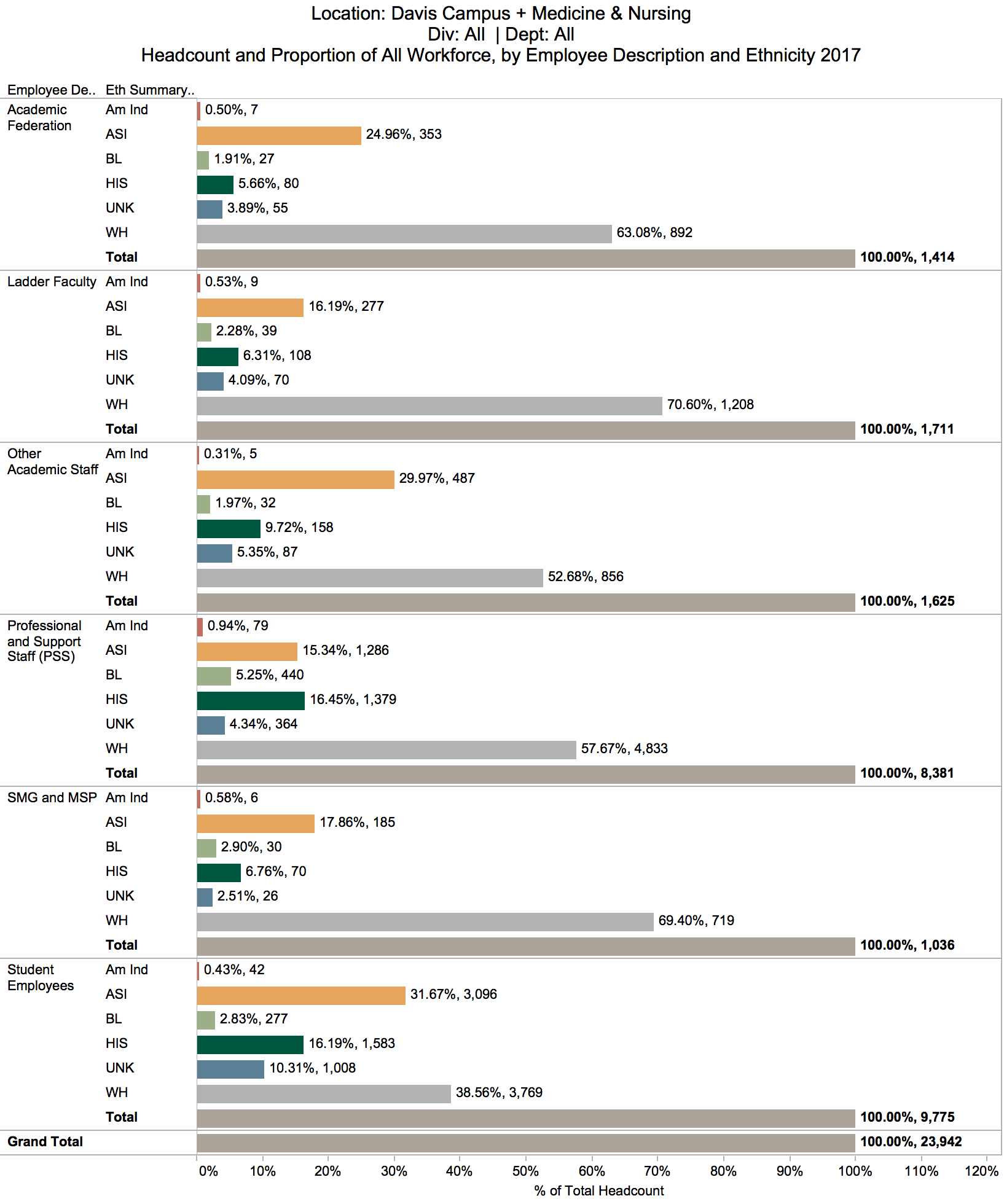
UC Davis has hired dedicated staff and has devoted resources toward enhancing diversity and inclusion in human resources, including expanded outreach efforts, enhanced use of talent analytics, and a suite of web-based diversity and inclusion resources. The Strategic Vision for Diversity and Inclusion at UC Davis (2017) and the report of the Taskforce on Workplace Climate (2017) have made strong recommendations for continuing to improve hiring, retention, and promotion efforts. These reports include recommendations around the following issues that are also relevant to creating a strong Hispanic Serving Institution:
better mechanisms for employees to seek support and institutional action in situations involving exclusionary (shunned, ignored), intimidating, offensive and/or hostile conduct (bullied, harassing) in the workplace;
- new trainings and resources to enable a positive workplace climate;
- access to and analysis of talent analytics, including retention data and salary equity;
- equity issues related to performance evaluations; and
- attention to hiring and promotion with diversity.
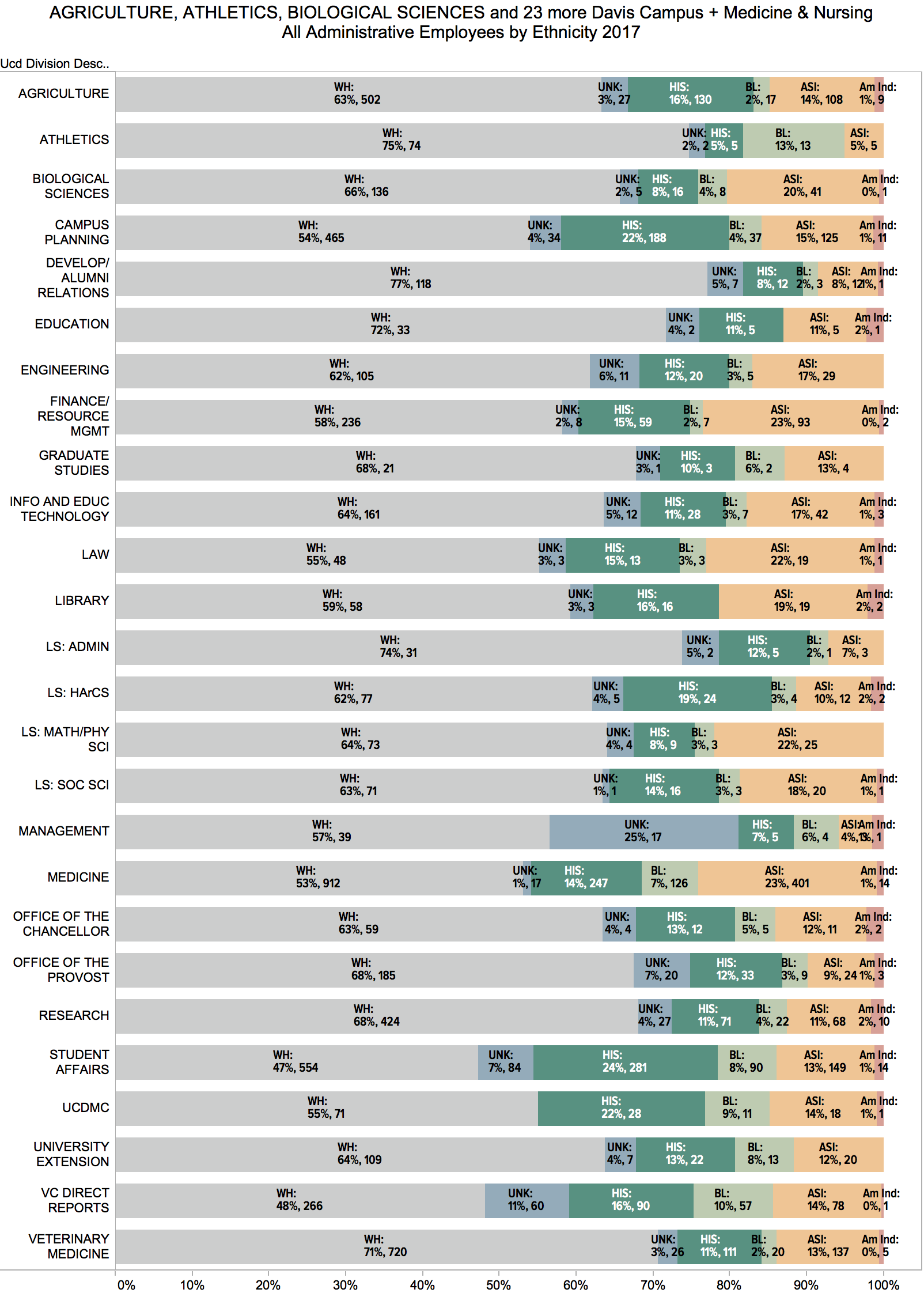
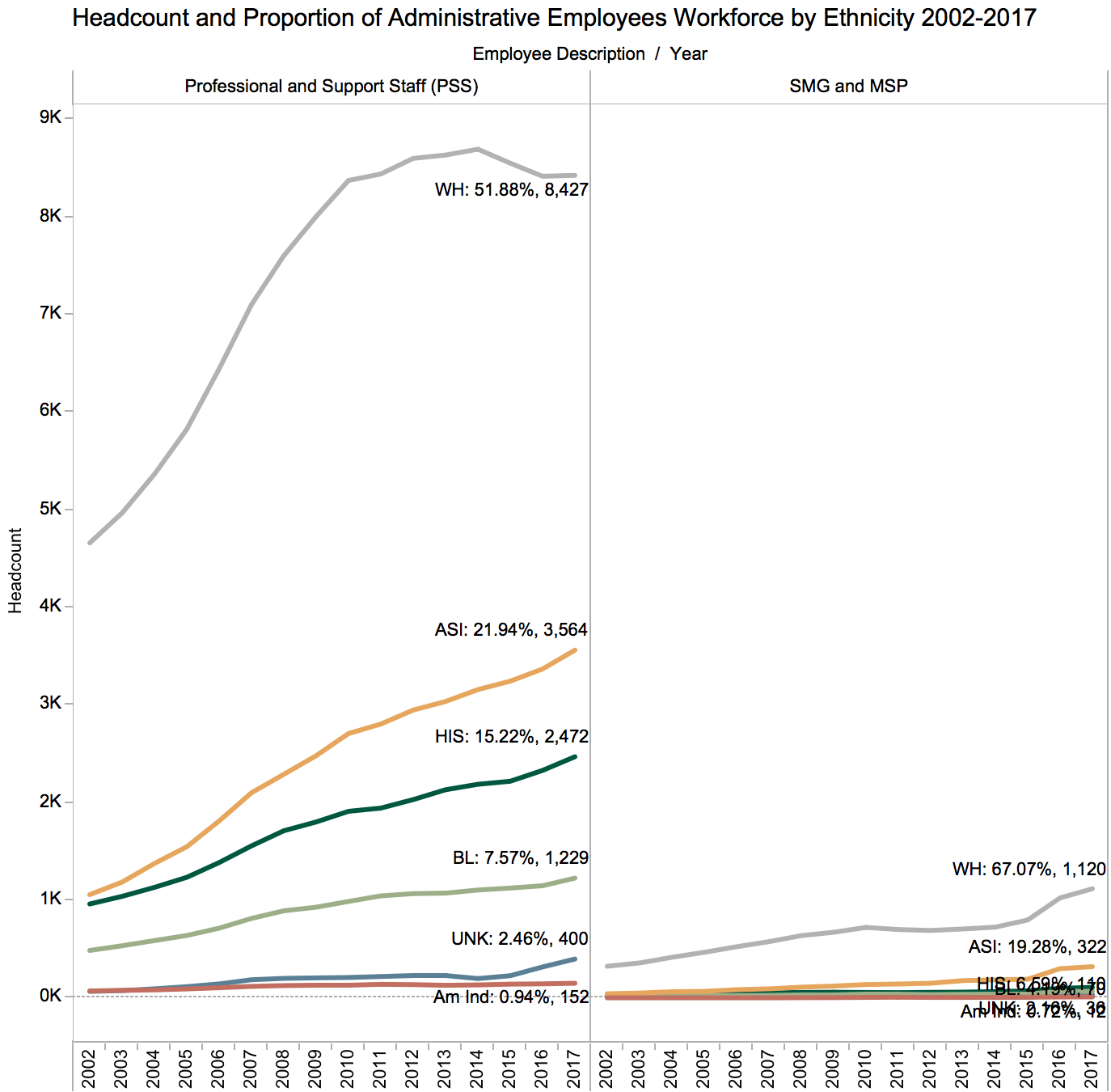

Finally, representational diversity, to be meaningful, must also mean that the presence of diverse faculty and staff will matter to influencing policies and practices at UC Davis. It’s not enough to say that UC Davis is committed to promoting faculty and staff with a commitment to our Rising Scholars: those individuals need to be invited to take leadership roles and then rewarded and acknowledged for their service. At the 2019 4 th National People of Color Legal Scholarship Conference, the topic of leadership in higher education was a recurring topic. Several leaders are now asking not only to be invited to the table but also to bring more chairs to the table or even to redesign or purchase a whole new table. In other words, leaders from historically marginalized groups need to be included in all work around institutional progress and transformation and far beyond issues that are explicitly about “diversity” in its most marginalized definitions.
Incentivizing Inclusive Classroom Environments
At a R1, land grant HSI, we assert as a value the imperative of preserving strong synergies among inclusive teaching excellence and research. The HSI Taskforce understands, however, the tensions around requiring that all faculty at UC Davis balance the exigencies of inclusive excellence in teaching and research, in addition to service, especially as we envision inclusive excellence in this document. For this reason, we reject the idea of supporting solely a single model of the teacher-researcher who can mentor and elevate our Rising Scholars’ desires to lead as researchers, policy-makers, and problem solvers in our society. For example, we value faculty at UC Davis who are conducting time-intensive research and who serve as mentors and teachers, whether in the lab, in the classroom, or in the field and with communities. We also value structural innovations at UC Davis that seek to preserve the values of including faculty with significant dedication to inclusive excellence in teaching and research.
The University of California has designed the Lecturer with Security of Employment (LSOE) series for appointees, “whose primary responsibility is teaching and teaching-related tasks and secondary responsibility is professional and/or scholarly achievement and activity, including creative activity, especially as they relate to instruction and pedagogy.” Evaluations of faculty in the LSOE series are weighted more heavily for teaching excellence, but they are also evaluated on their research and service (APM 285). The Academic Personnel Manual outlines the criteria for this evaluation, including, “contributions to diversity and equal opportunity are most likely to be focused on teaching and learning and can take a variety of forms including efforts to advance equitable access to education, public service that addresses the needs of California’s diverse population, or teaching that is particularly sensitive to diverse populations. Mentoring and advising of students and faculty members particularly from underrepresented and underserved populations should be given due recognition in the teaching or service categories of the academic personnel process.” They are also evaluated on creating “an academic environment that facilitates active participation and learning by all students with a focus on developing effective strategies to advance learning by students in various underrepresented groups” (University of California, Office of the President (2019, March 28). UC Davis employs more LSOE appointees than any other UC campus, an opportunity to leverage this role to advance research on inclusive classroom environments.
The responsibility of creating inclusive classrooms and participating in pedagogy innovation projects should not be exclusive to the LSOE appointment, however. All faculty need to be incentivized to create inclusive classrooms and to mentoring students. Widespread use of diversity statements has been seen as a mechanism to increase awareness and recognition of diversity contributions. Academic Affairs, through its administration of the recent Open Search initiative and learnings from the Center for the Advancement of Multicultural Perspectives in Science (CAMPOS), is continuing to develop rubrics, training, and guidance for the use of diversity statements in hiring. Improved guidance needs to be both continually improved and extended to merit and promotion, aligning with the goals of this HSI initiative through the teaching and mentoring of Rising Scholars. The STEP Plus program at UC Davis offers a structure for rewarding these contributions.
It is also important to ensure that the right measures are being used to evaluate teaching excellence. The HSI Task Force acknowledges that the Davis Division Executive Council will be discussing Student Evaluations of Teaching (SET) in light of the growing body of research suggesting that such evaluations are often biased against faculty of color and female faculty and often don’t correlate with actual student learning outcomes.2
As the HSI Task Force pushed deeper into conversations about teaching, we could not help but delve into those pernicious issues in higher education that go well beyond the scope of HSI. We entered into the long and difficult conversations about how UC Davis deploys and treats adjuncts (also known as Unit-18 lecturers) with a recognition that our concerns are one piece of a much larger dialogue. We encourage the institution to think in a principled away about its commitment to students as it pursues innovations around the integration and training of Unit-18 lecturers with respect to our Rising Scholars. Even those hired because of their skills in teaching can benefit from training and development around cultural and educational equity. All UC campuses make funding available for Unit 18 Lecturers to seek professional development, but we are aware that the funding is limited and can fund a broad range of activities at the discretion of the Unit-18 lecturer (University Council, 2019). We are also aware that other units cannot shift funding earmarked for ladder faculty to Unit-18 lecturers, even when they identify opportunities to benefit this important segment of our campus community.
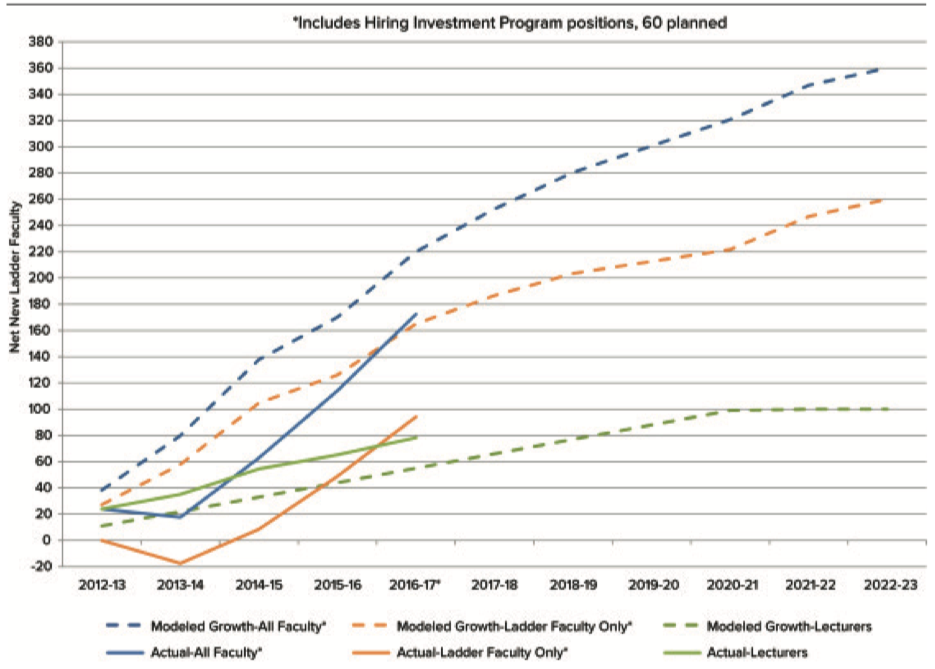
Research
Research is a key component to any HSI plan especially at a R1 land grant institution like ours because it deeply engages faculty and provides a vehicle for faculty to make connections to students and community. There are two areas of research that are key to our identity as an HSI: community engaged scholarship and critical action research that utilizes our campus and classrooms as laboratories for creating cultural and educational equity for Rising Scholars.
Public Scholarship
In our engagements with UC Davis students, our Rising Scholars expressed a desire for an education that is relevant to their identity and lives, and that prepares them to solve the societal problems affecting their communities. They asked for relational, rigorous, and relevant research. The HSI Taskforce remained in close consultation with the Office of Public Scholarship and Engagement (OPSE) at UC Davis through conversations with Founding Director Michael Rios and his team. The alignment of HSI with OPSE is clear in his words, “We have a tremendous opportunity to elevate and expand upon the great work that students and faculty are doing with communities in the Sacramento region, California and beyond. The creation, support and promotion of community engagement are vitally important to the civic mission of UC Davis.”
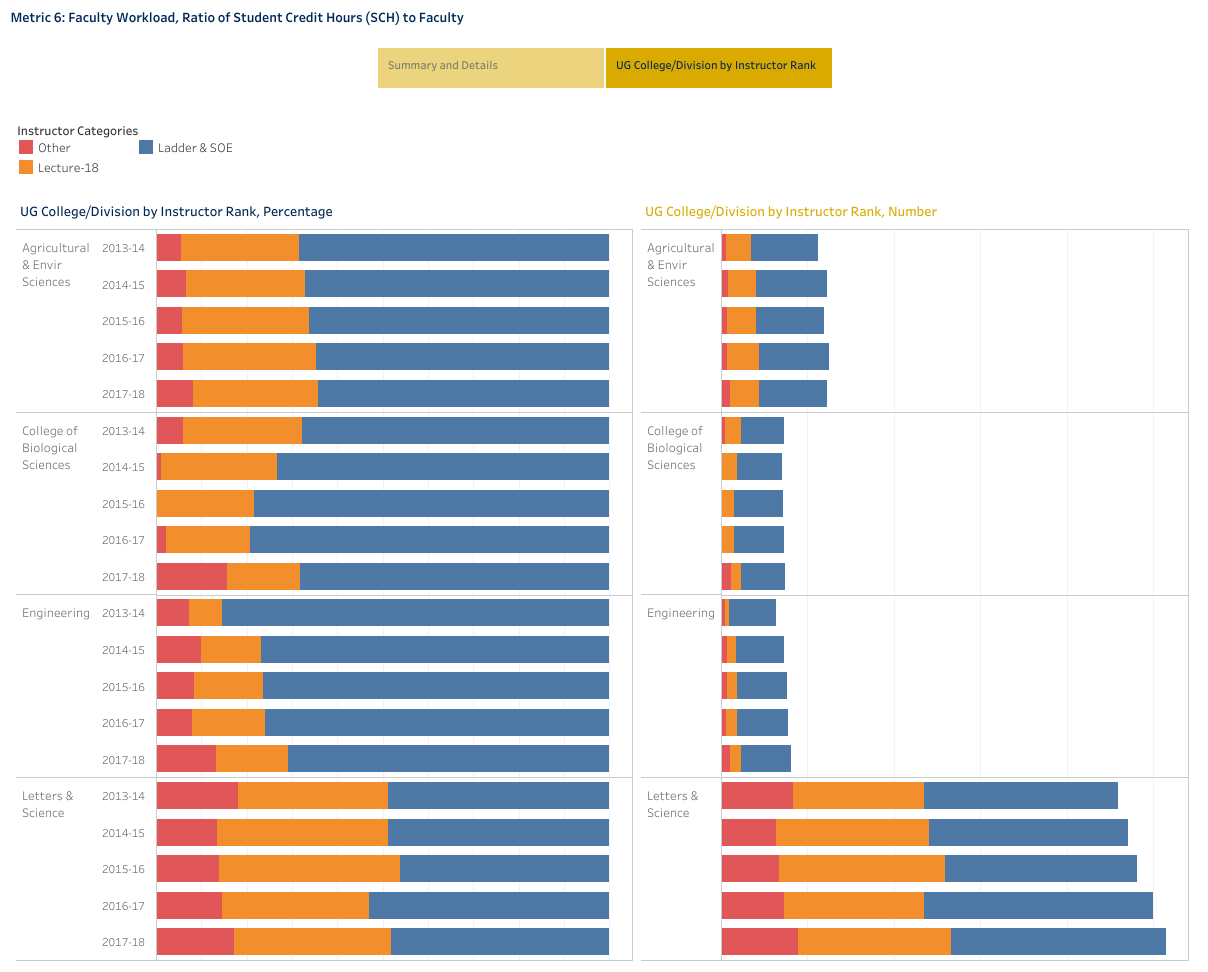
Our HSI identity must be centered around engaging and collaborating with Chicanx/Latinx communities. Moreover, to become a premier Hispanic-serving, land grant institution we must define additional types of service engagement by broadening the scope of “serving” to include not only students’ experiences, but entire communities, recognizing that public institutions of learning today should function as agents for social mobility.
By “returning benefits to the communities that work with us,”3 increased engagement in Chicanx/Latinx communities promises to (1) to develop a robust and diverse workforce equipped to address the disparities affecting Chicanx/Latinx communities in California and the US; (2) nurture Rising Scholars as leaders; (3) promote cultural humility skills among all faculty, students and staff.
Critical Action Research
In his presentation to the HSI Taskforce, Pablo Reguerin from UC Santa Cruz, citing the work of Estela Bensimon at Cabrillo College, called on UC Davis to “become leaders in critical action research” and to ask itself “What are the practices, structures knowledge and competencies needed to engage in critical action research that leads to racial equity? What would critical action research entail at UC Davis?” (University of California, Davis, 2017).
UC Davis already performs some of this research in pockets across campus such as in the Center for Educational Effectiveness, the School of Education, and by individual faculty committed to serving Rising Scholars. Other UC campuses are also engaged, and there is an ad hoc sharing of findings at various conferences organized within the system. We view UC Davis joining fewer than 20 other HSIs nationwide that are R1s, five of which are currently other UCs, as an exceptional opportunity to lead by establishing new metrics for measuring our success, examining current practices to assess effectiveness, and piloting reforms that establish new best practices and innovations in an R1 setting, helping us achieve the aspirations we have for our Rising Scholars and our HSI identity. Our findings suggest that our work would benefit from structures that formalize collaboration and inspire sharing and innovation to reinforce our efforts.
- 1See for example, University of California, President’s Task Force on Faculty Diversity (2019, March 26). The representation of minorities among ladder rank faculty; University of California, Office of the President (2019, March 26). Diversity: Faculty and other academic personnel; University of California Academic Senate (2016, February 2). Hare, D. J. to Aimée Dorr. Best Practices for Diversifying the UC Faculty; Johnson, K. R. (2016). How and why we built a majority-minority faculty. The Chronicle of Higher Education. Taylor, O., Apprey, C. B., Hill, G., McGrann, L., & Wang, J. (2019), Diversifying the faculty. Association of American Colleges & Universities.
- 2See for example Flaherty, C. (2018, May 22). Teaching eval shake-up. Inside Higher Ed; MacNell, L., Driscoll, A. & Hunt A. N. (2014, December), What’s in a name: Exposing gender bias in student ratings of teachers. Innovative Higher Education 40, 4: 291-303; Mitchell, K. M. W. & Martin, J. (2018). Gender bias in student evaluations. Political Science & Politics 51(3): 648-52; Uttl, B., White, C.A. & Gonzalez, D.W. (2017). Meta-analysis of faculty’s teaching effectiveness: Student evaluation of teaching ratings and student learning are not related. Studies in Educational Evaluation 54: 22-42.
- 3Diversity and Inclusion Strategic Vision Plan for UC Davis.

